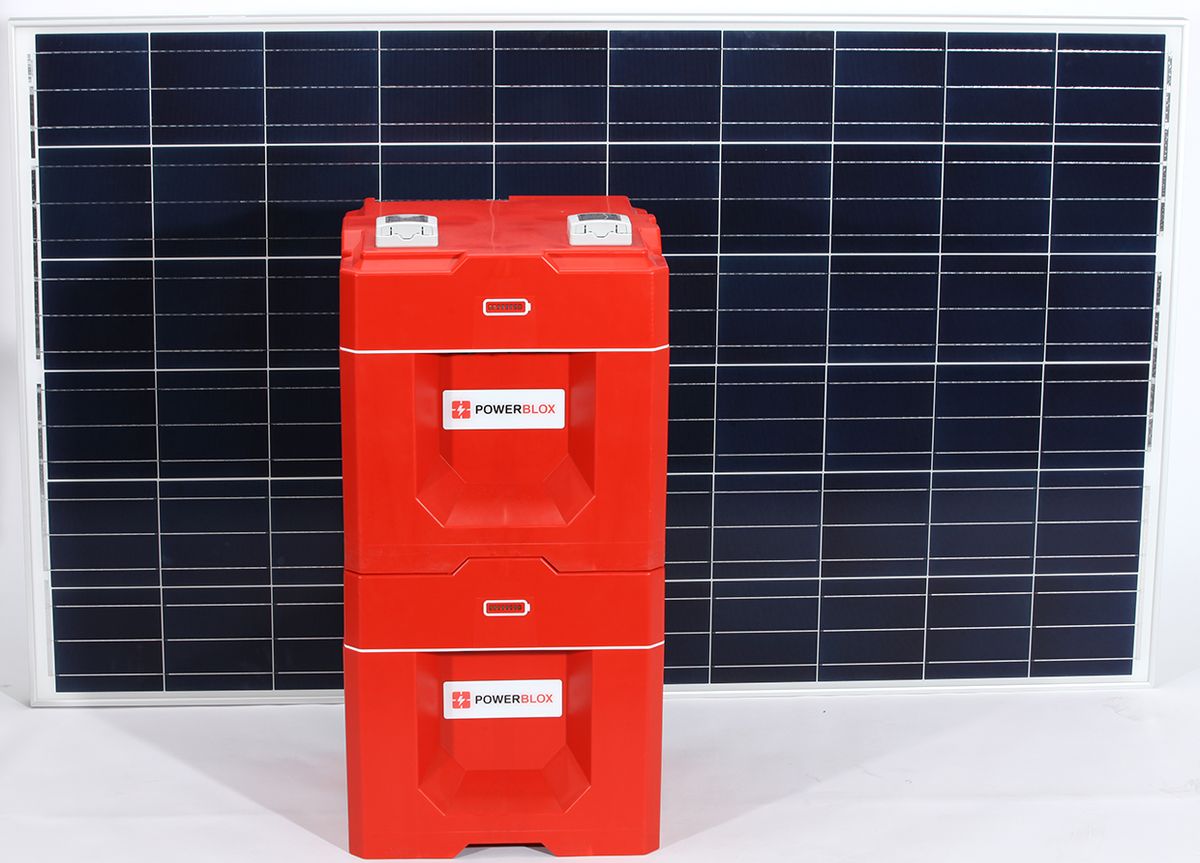More than 1 billion people in the world live without electricity. The challenge of bringing it to them is somewhat analogous to the desire decades ago to install fixed telephone lines in impoverished communities. The need was there, but the money wasn’t. Then mobile phones came along and now communication is ubiquitous, even among the poorest. Electricity could use a similar fix:a relatively inexpensive and lightweight solution, technically speaking, that can be set up quickly in rural areas and serve millions of people in a short time frame.
Enter Power-Blox. This distributed energy system is made of 1.2 kilowatt-hour battery cubes that store solar or wind energy. They snap together LEGO-like to save and provide more power. Software that uses a swarm intelligence-based algorithm balances energy fluctuations between connected units, even if one of them malfunctions or is unplugged. One unit can serve the needs of a few people, while several units can work together to create a modular microgrid, powering an entire village.
“In our opinion, the swarm intelligence that Power-Blox has developed will make a very big difference for rural electrification,” says Stefaan Debref, cofounder of the Brussels-based renewable energy developer GreenVentures. “You can start small and scale as demand grows.”

GreenVentures, which has installed more than 250 megawatts of grid-connected renewable projects all over the world, has launched a for-profit social enterprise called FlexGrid that’s using Power-Blox to build an off-grid solution for rural villages. With a grant from the European funding body ElectriFi, Debref and his team set up a testing site in a remote community in southern Mali, an African country where more than 10,000 villages lack access to the electrical grid.
The microgrid consists of five PowerHubs—secured metal sheds about 1-meter square and 2 meters tall—each topped with a solar panel. Inside, the space can accommodate up to eight Power-Blox units, which can be installed without any special technical knowledge. One Power-Blox cube has enough power to serve the modest electrical needs—running lamps, charging cell phones, or powering a television—of eight households in the village. The five hubs are connected to each other and the energy is distributed between them in a way that automatically balances the load.

Power-Blox chairman and cofounder Armand Martin likened the power-balancing scheme to a system of water buckets all connected by pipes. A person can drain water from their own bucket but once the level gets too low, water from the other buckets will flow in and create balance.
“What you plug into a single box is always the priority, but any excess energy is made available to the whole grid,” he said.
Power-Blox is the brainchild of co-founder Alessandro Medici, an electrical engineer by training, with a specialization in information and computer technology as well as energy economics. In 2007, he quit his previous job to reassess his career and, in his words, make his life more meaningful. He moved to Kenya to work on a cattle ranch to help run the business. It ran on diesel generators and Medici saw an opportunity to save money on fuel and reduce pollution. He worked with the ranch owner to raise money and eventually helped switch the ranch’s power source to solar. It was then that he decided to start a company that could provide a flexible, scalable energy solution for rural, off-grid communities.
Based in Brugg, Switzerland, Power-Blox now sells units to individuals, companies, energy distributors like GreenVentures, and government agencies that provide disaster relief and shelter to refugees. They’ve also created packages that could launch small businesses in underdeveloped countries. For instance, one package contains a Power-Blox unit with a charging station that can recharge up to 30 mobile phones, recharge electric motorbikes, or run a small restaurant. Other packages are planned that include a power unit with a refrigerator to keep drinks cold or a power unit with a water purification system.
“Once you have power there, businesses start and demand gets bigger,” said Medici.
Medici and his team are currently working to integrate an Internet-of-things protocol into Power-Blox units so that they can be monitored and controlled remotely. In Switzerland, they’re testing a blockchain platform to manage an electricity trading system in a community garden, allowing members of a microgrid to buy and sell electricity.
In Mali, GreenVentures has plans to install 50 additional FlexGrids in 2018, bringing electricity to about 6,500 households in 12 months time. By 2019, they hope to expand that to 500 villages. Users will be charged a fixed rate on a tiered structure, aligned with their ability to pay. The most expensive tier will cost about 3 Euros per month (US $3.50). For comparison, two candles with a month’s worth of kerosene fuel costs around 9 Euros (US $10.60). People will pay for the electricity using an SMS-based payment system already popular in Africa, where most people do not have bank accounts.
“I feel that something big is starting,” said Medici. “The chance for people getting power is so huge, and I’m really happy with it.”
